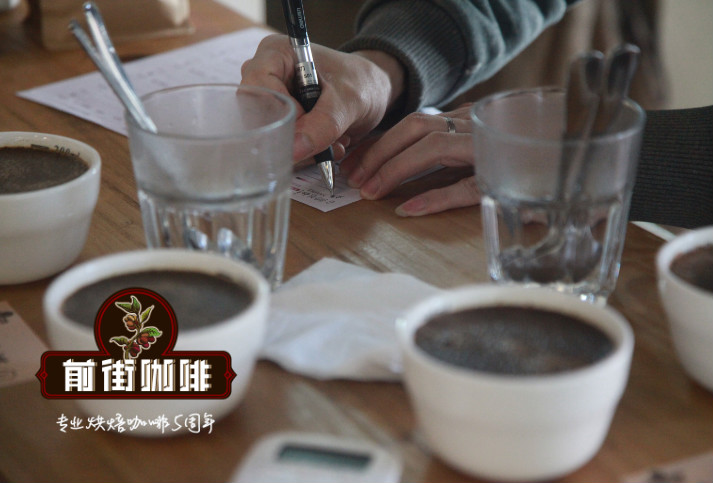What is the Mokhtar mode of Yemeni coffee flavor in the ancient city of Sanaa, Yemen? Characteristics of Yemeni coffee

Professional coffee knowledge exchange more coffee bean information please follow the coffee workshop (Wechat official account cafe_style)
Yemen was the first country to use coffee as a cash crop. Legend has it that Muslim Sufi pilgrims were introduced from Ethiopia in the 6th century. The most correct spelling should be Al-Mahka, which is Arabic spelling, growing on steep terrain with little rainfall, poor land and insufficient sunshine. This unique and difficult condition for coffee growth has given birth to an irreplaceable Yemeni mocha. Wild Yemeni beans are mostly unmanaged, mature and dry after natural growth, farmers only do the work of picking up, the overall style [wild] or [natural] with earthy flavor is extremely complex, and for some people it is spicy, but you must try it sometime anyway. if you also fall in love with him deeply, it will be the beginning of a whole new coffee journey.
Yemen Sana'a Province Al-Durrar Region Natural Process
Sun treatment in Al-Durrar District of the Ancient City of Sanaa, Yemen
Guojia Yemen (Yemen)
Production area Al Durrar
Producer Mokhtar Alkhanshali
Sea pull 2300-2500 meters
Variety Yemeni ancient Tibica species-Udaini
Treated full-ripe red cherry
Sun drying of African elevated scaffolding
[the birth of Mokhtar mode]
Mokhtar Alkhanshali, the Yemeni-American founder of Mocha Port, is a legend himself. He grew up in the San Francisco Bay area, worked as a boutique salesman and building manager, and had his first taste of boutique coffee in a single producing area in 2013.
However, during the next trip to the cafe, Mokhtar found that he had never seen coffee from Yemen. The quality of Yemen, originally an ancient coffee producer, had declined sharply in the past century, because farmers found that the income of growing a drug crop called Khat could be much higher, so they were reluctant to invest in improving the quality of coffee. This aroused Mokhtar's curiosity about the coffee produced in his hometown and has since led Mokhtar to a life-changing path. The first guide Mokhtar sought to enter the field of coffee, and our old friend Graciano Cruz from Panama (this story is also mentioned in his biography the Monk of Mokha published in January 2018), Graciano Cruz introduced him to another well-known master, Willem Boot. Mokhtar's coffee career has entered another realm since then. Under the strong advice and guidance of Willem Boot, Moktar obtained the certificate of Q grader through the hard way of borrowing money, and immediately set out to return to Yemen to start his coffee production project, which has been going for three years.
During these three years, Moktar has visited more than 30 coffee producing areas in Yemen, some of which are so remote that they even take three days of hiking to get there. Moktar's dream is to work with farmers to improve the quality of coffee production and increase the income of coffee farmers, so as to benefit the whole region and even eliminate drug cultivation. As the second step of the project, Moktar must educate and cooperate with farmers, including applying organic fertilizers, harvesting ripe cherries, post-processing and drying, and even providing micro loans to small farmers to rescue them from the cash-strapped debt cycle. Coffee farmers who produce according to these standards receive 35% more than usual income. This is the so-called Mohktar pattern (Mokhtar method was born)
[the Beacon Journey of Mokhtar]
In March 2015, after years of working with coffee farmers, Moktar was ready to share the fruits of his project. His two suitcases were filled with coffee samples from small coffee farmers, and he was going to bring them to SCA's annual meeting for the industry elite to appreciate. On the night he planned to leave Yemen, civil war broke out in Yemen, all civilian airports were bombed, no passenger flights took off or landed, while neighboring countries such as Somalia, India and Pakistan were trying to evacuate their nationals, the US government delayed any action, and Moktar and his coffee dream seemed to be trapped.
But waiting to die was not his style. He decided to leave for the port of Port of Mokha, the world's first coffee export port. He hired a fisherman to cross the Red Sea with samples of coffee from his two suitcases in a fishing boat without any radio or GPSg equipment and arrived in the small African country of Djibouti.
The story of Mokhtar's thrilling departure from Yemen quickly became the focus of the media, and in a cup test at SCA's annual meeting, his coffee sample scored 90 +, beating works from many well-known estates. In February 2017, his coffee scored a legendary score of 97, the highest score of the year (and the highest ever) at the Coffee Review.
END
Important Notice :
前街咖啡 FrontStreet Coffee has moved to new addredd:
FrontStreet Coffee Address: 315,Donghua East Road,GuangZhou
Tel:020 38364473
- Prev

How to tell if defective beans in coffee affect coffee flavor
Professional coffee knowledge exchange More coffee bean information Please pay attention to coffee workshop (Weixin Official Accounts cafe_style) Defective beans refer to beans with abnormal development, or beans contaminated during refining. If defective beans are mixed with green beans, the aroma of coffee will be affected, and the brewing quality will be lower than that of coffee without defective beans. After harvesting coffee, farmers usually put coffee cherries first
- Next

Introduction to the Flavor characteristics of Colombian Coca
Cauca province is a certified coffee producing area in Colombia, with an average elevation of 1758m and a maximum elevation of 2100m. The topography, precipitation, temperature and volcanic soil of the area prepare suitable conditions for the growth of coffee. Cauca is 80% mountainous, with parallel mountain systems in the east and middle, part of the Andes, and the central mountain system includes two major volcanoes, Sotar.
Related
- Detailed explanation of Jadeite planting Land in Panamanian Jadeite Manor introduction to the grading system of Jadeite competitive bidding, Red bid, Green bid and Rose Summer
- Story of Coffee planting in Brenka region of Costa Rica Stonehenge Manor anaerobic heavy honey treatment of flavor mouth
- What's on the barrel of Blue Mountain Coffee beans?
- Can American coffee also pull flowers? How to use hot American style to pull out a good-looking pattern?
- Can you make a cold extract with coffee beans? What is the right proportion for cold-extracted coffee formula?
- Indonesian PWN Gold Mandrine Coffee Origin Features Flavor How to Chong? Mandolin coffee is American.
- A brief introduction to the flavor characteristics of Brazilian yellow bourbon coffee beans
- What is the effect of different water quality on the flavor of cold-extracted coffee? What kind of water is best for brewing coffee?
- Why do you think of Rose Summer whenever you mention Panamanian coffee?
- Introduction to the characteristics of authentic blue mountain coffee bean producing areas? What is the CIB Coffee Authority in Jamaica?

